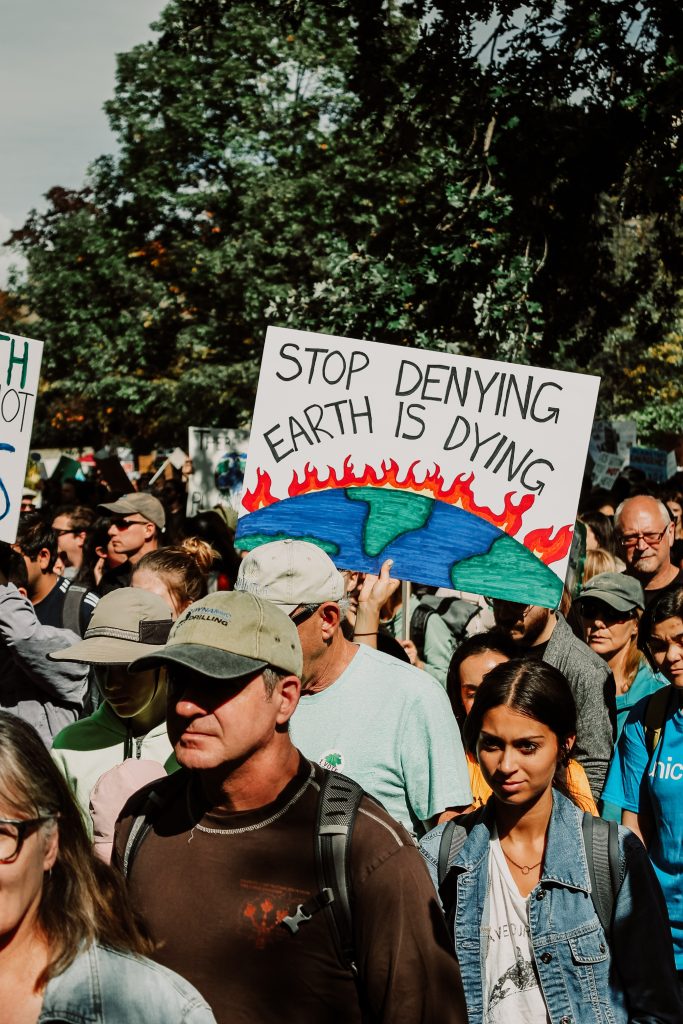Lent 2023, Day 9: On God’s (kind of) Green Earth

Check out this interview with Kyle Meyaard-Schaap at Religion News Service by Kathryn Post:
…Meyaard-Schaap is now the vice president of the Evangelical Environmental Network, a group that advocates for climate action because of, not in spite of, their faith. His new book, “Following Jesus in a Warming World: A Christian Call to Climate Action,” offers personal accounts, theological frameworks and practical advice for Christian climate action.
Yes, Evangelical Environmentalists are a thing. More (Post’s questions are in bold, and Meyaard-Schaap’s answers follow):
What does Jesus’ incarnation have to do with climate justice?
In Jesus, we have the infinite Creator God choosing to take on the stuff of that creation, and to bind himself to it forever. I can’t think of a greater affirmation of the goodness of created things. It’s such a powerful counter narrative to some of the more Gnostic, dualistic theologies that many of us who grew up in the American church in the ’80s, ’90s and early aughts breathed in — the rapture, “Left Behind” theology that says that our souls are what matter, and the body has nothing of eternal importance.
I think the incarnation and the resurrection fly in the face of that and affirm the inherent dignity of humanity and of all created things. It helps us recover a more radically integrated theology that understands body and the soul as inseparable.
What’s your response to Christians who argue that humans were called to have dominion over creation?
I would say yes, but it’s incomplete. Yes, Genesis (chapter) 1 says, God creates humans in his image and tells him to rule over the fish in the sea, the birds in the air and everything that moves along the ground. And I wish that Hebrew word for rule, “radah,” was softer, but it’s harsh.
But I think the error is separating Genesis 1 from Genesis 2. In Genesis (chapter) 2, God takes the man that he creates from the dust of the ground, breathes his breath into him and says “avad and shamar” this garden, which is translated as “serve and protect.” I think these two commands become a couplet of instructions. So Genesis 1 and 2 tell us to rule by serving and protecting.
The rest of Scripture is clear that creation has one king, and it’s Christ. If we’re going to rule alongside Christ, we have to look at how Christ exercises his authority. He becomes a baby. He washes feet. He climbs up on a cross. Christ exercises his authority through humility, service and sacrifice, not through exploitation and domination. So rule, yes, but rule through service and by protecting the vulnerable.

Why did you include a chapter on being pro-life in this book?
I think many of us, particularly in America, are suffering from a myopic idea of what it means to be pro-life in the modern world. So many of us associate it simply with the issue of abortion. If we truly want to honor life as the gift that it is from God, let’s think about things like climate change, pollution and the spread of disease, which is made worse by climate change.
If we’re going to be serious about protecting and defending life in all of its fullness, we have to be concerned about not just abortion, but young kids, adults, the poor, people of color, the elderly, the disabled. And we have to think about how other issues like climate change affect people’s ability to access that abundant life that Jesus said he came to give right here and now.
Read the whole thing here.

